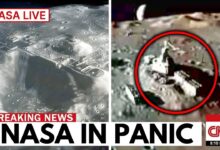Something Weird Is Happening On Jupiter
Jupiter is far more complex than what was once believed. Initially seen as just a giant ball of gas, recent discoveries reveal that the planet has water, lightning storms, and a vast ocean of liquid hydrogen beneath its thick cloud cover. Let’s break down the details of Jupiter’s mysteries and the events that shaped it.

### Jupiter’s Early Role in the Solar System
During the early formation of the solar system, Jupiter nearly disrupted Earth’s creation. As gas and dust swirled around the infant Sun, Jupiter, rapidly gaining mass, began spiraling inward toward the center. Its immense gravitational pull scattered asteroids and debris in all directions—some were ejected into deep space, some flung towards the Sun, and others hurled at a developing Earth. Had Jupiter come any closer, Earth’s formation would have been jeopardized. Fortunately, Saturn’s formation intervened. The gravitational interactions between these two gas giants caused them to push and pull on each other, spiraling outward and leaving enough material behind for Earth and the other inner planets to form.
### Jupiter’s Atmospheric Composition and Water
For a long time, it was believed that Jupiter was a dense ball of gas with a small rocky core. However, we now know that its atmosphere is a swirling mixture of hydrogen and helium gas, with clouds rich in ammonia and water vapor. In 1995, NASA’s Galileo spacecraft detected water vapor in Jupiter’s atmosphere. Though water only constitutes about 0.25% of the atmosphere, that’s still millions of times more than what we have on Earth.
The water on Jupiter doesn’t originate from its own formation but was likely brought in by icy objects from the outer solar system. Jupiter’s strong gravity helped redirect chunks of ice inward, some of which collided with Earth, delivering water that made life possible. This water in Jupiter’s atmosphere contributes to the planet’s powerful storms.
### Lightning Storms and Rain on Jupiter
The clouds on Jupiter are not just made of gas but also contain a mix of water and ammonia. In the upper cloud layers, where temperatures drop below -100 degrees Celsius, water ice interacts with ammonia, which acts as an antifreeze, allowing liquid water to exist in these frigid conditions. As ice crystals and water droplets collide, they generate massive lightning storms, far more powerful than any storm seen on Earth.
Interestingly, the water and ammonia mixture forms “hailstones” that fall into the lower atmosphere, where they melt, evaporate, and then rise back up to repeat the cycle. These storms, including the famous Great Red Spot, are driven by jets of hot gas rising from deep within Jupiter’s atmosphere.
### The Great Red Spot
The Great Red Spot is one of the most iconic features of Jupiter—a gigantic storm larger than Earth, stretching thousands of kilometers across and extending deep into the planet’s atmosphere. The Great Red Spot is essentially a colossal hurricane that has raged for hundreds of years. It towers higher than any other cloud on Jupiter, absorbing more ultraviolet light from the Sun, which reacts with chemicals in the storm, giving it the distinct red color.
### Jupiter’s Hidden Ocean
Below the thick cloud layer lies a colossal ocean of liquid hydrogen, the largest ocean in the solar system. This ocean isn’t like any on Earth—it’s formed under such intense atmospheric pressure that hydrogen, normally a gas, is forced into a liquid state. Jupiter’s gravity compresses this ocean, which is about 20,000 kilometers deep—2,000 times deeper than Earth’s oceans.
As you descend deeper into Jupiter, the pressure increases to the point where liquid hydrogen transforms into *metallic hydrogen*. This bizarre state of hydrogen has metallic properties, such as being highly conductive. The intense gravity on Jupiter squeezes hydrogen so tightly that its electrons break free, allowing it to conduct electricity like a metal, even though it remains a liquid.
### Jupiter’s Fuzzy Core
Beneath this massive ocean of metallic hydrogen lies Jupiter’s core, but it’s not what scientists originally thought. Early theories suggested that Jupiter had a dense, solid core similar to Earth’s, made of iron and rock. However, new research indicates that Jupiter’s core is “fuzzy,” meaning the boundary between the core and the surrounding layers of metallic hydrogen is not sharp. The core may even be mixed with the liquid hydrogen layers, creating a gradient instead of a distinct solid center.
This fuzziness could be the result of a massive collision in the early solar system, where a large rocky planet may have slammed into Jupiter, scattering and diluting the core. This collision could also explain how Jupiter managed to grow so large so quickly by absorbing massive amounts of material from other celestial bodies.
### Jupiter’s Magnetic Field
Jupiter’s immense mass and metallic hydrogen ocean contribute to its powerful magnetic field, which is about 20 times stronger than Earth’s and extends thousands of kilometers into space. This magnetic field is so large that Jupiter’s four largest moons orbit within it. The motion of liquid metallic hydrogen generates electric currents, which, when combined with Jupiter’s fast rotation, create an incredibly strong electromagnetic field.
This field powers Jupiter’s auroras, which are similar to Earth’s northern lights but far more intense. The auroras on Jupiter are generated at its poles, and the northern aurora is often accompanied by a cluster of cyclones at the planet’s north pole. These cyclones are massive—each one is thousands of kilometers wide.
### The Great Blue Spot
In addition to the Great Red Spot, Jupiter also has a “great blue spot,” which is not a storm but a magnetic anomaly. Unlike Earth’s magnetic field, which has clear points at the north and south poles, Jupiter’s magnetic field is much more chaotic. The Great Blue Spot highlights how little we understand about Jupiter’s magnetism. While Earth’s magnetic field lines are neatly looped from pole to pole, Jupiter’s are lumpy and asymmetrical, further illustrating just how strange this planet is.
### Conclusion
Jupiter is far from being just a simple gas giant. Its complex atmospheric processes, hidden ocean of liquid hydrogen, metallic core, and massive storms make it one of the most intriguing objects in our solar system. Even today, as missions like Juno continue to explore the planet, Jupiter still holds many secrets about the early solar system, the formation of planets, and the powerful forces at work in the universe.








